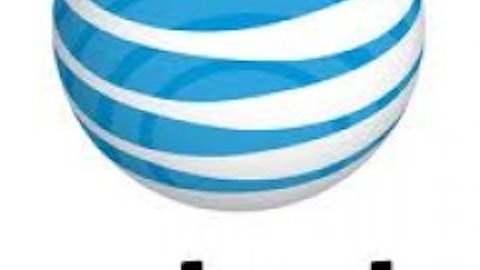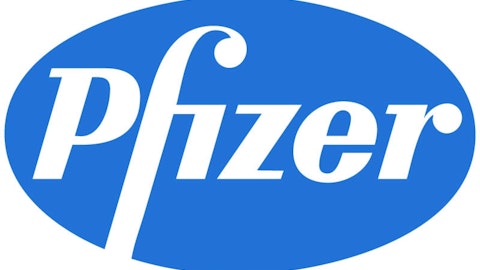
The Walt Disney Company (NYSE:DIS) was an innovator as well as an entertainer. This began early with Mickey Mouse, whose debut in 1928’s Steamboat Willie gave audiences their first experience with a cartoon synchronized to its own soundtrack. Four years later, on July 30, 1932, The Walt Disney Company (NYSE:DIS) released Flowers and Trees, the first film ever released using the full Technicolor process.
Flowers and Trees‘ innovative use of color, which Disney had secured through an exclusive five-year contract with Technicolor, wowed audiences and Academy voters alike. The Walt Disney Company (NYSE:DIS) won the first Oscar given for animated shorts later that year, beginning a momentous relationship with the Academy that eventually earned Walt 22 Oscars, 12 of which were awarded for short cartoons. The exclusive Disney-Technicolor five-year contract also locked out competing animators, giving Disney’s Silly Symphonies cartoons a big leg up in quality that helped carry the company forward for several years. The Walt Disney Company (NYSE:DIS) released Snow White two years after the contract expired, ensuring its legacy as the world’s premiere animation company.
Exactly 66 years later, on July 30, 1998, The Walt Disney Company (NYSE:DIS) expanded into watery new frontiers with the launch of Disney Magic, the first of its cruise ships. The family-friendly cruise liner is now one of four Disney ships plying the world’s waters (though the line is primarily based in the Caribbean), and Disney Cruise Lines has become an important part of the company’s parks and resorts segment, which grew from a $5 billion unit by revenue the year before Disney Magic launched into a $13 billion juggernaut in 2012. The growth of this segment is just one of the reasons why The Walt Disney Company (NYSE:DIS) has become one of the Dow Jones Industrial Average (Dow Jones Indices:.DJI)’s standouts since its induction in 1991. In its more than two decades of Dow Jones Industrial Average (Dow Jones Indices:.DJI)’ membership, the House of Mouse has returned 700% to shareholders compared to the Dow’s 425% performance during the same time frame.
Blackout of the century
A devastating series of blackouts in northern and eastern India that began on July 30, 2012 holds the dubious distinction of being the largest power outage in human history. Over two days, the outage cascaded across the country, affecting 620 million people. However, a later Wall Street Journal review of power access determined that just more than half of the people in affected regions had any electricity in the first place. For the rest, it was “darkness as usual.” Still, the reach of the blackout is truly sobering. Imagine a nationwide power outage crippling the United States for two days. The results would be ugly, to say the least.
The dawn of the Great Society
After four years of political battles, punctuated by the assassination of a popular president, Medicare and Medicaid became law on July 30, 1965. First proposed by President John F. Kennedy and shepherded through to completion by his successor, President Lyndon Johnson, the Social Security Amendments of 1965 represented the biggest shift in government health policy in American history — one that had been decades in the making.
National health insurance had been proposed in various forms since Theodore Roosevelt’s unsuccessful third-party run for the presidency in 1912. It had been left out of the original Social Security Act, but it was revived as part of President Harry Truman’s “Fair Deal.” This effort, though likewise unsuccessful, shifted the conversation around national health insurance toward the later Medicare standard of care for the elderly.
Kennedy’s revival of the issue bore many similarities to the bill that was eventually passed in 1965, including a focus on Americans 65 or older and a payroll tax to be split evenly between employer and employee. A Democratic landslide in 1964 gave President Johnson the support needed to pass the program, which was signed within the first year of Johnson’s first full term. In honor of Truman’s efforts, Johnson made the 81-year-old former president the first beneficiary of the new program by presenting him with a Medicare card at the signing ceremony.
Today, after decades of changing population trends and rising health-care costs, the U.S. government’s annual Medicare and Medicaid expenditures have swelled to nearly $1 trillion before adjustments. Net benefit payments now total $560 billion each year to Medicare recipients and $260 billion to Medicaid recipients. There were nearly 48 million Americans enrolled in Medicare in 2010. At the same time, more than 61 million Americans, many of them children, receive some Medicaid assistance each year.
The article Disney’s Colorful Origins and the Birth of Medicare originally appeared on Fool.com and is written by Alex Planes.
Fool contributor Alex Planes holds no financial position in any company mentioned here. Add him on Google+ or follow him on Twitter @TMFBiggles for more insight into markets, history, and technology. The Motley Fool recommends Walt Disney (NYSE:DIS). The Motley Fool owns shares of Walt Disney.
Copyright © 1995 – 2013 The Motley Fool, LLC. All rights reserved. The Motley Fool has a disclosure policy.



